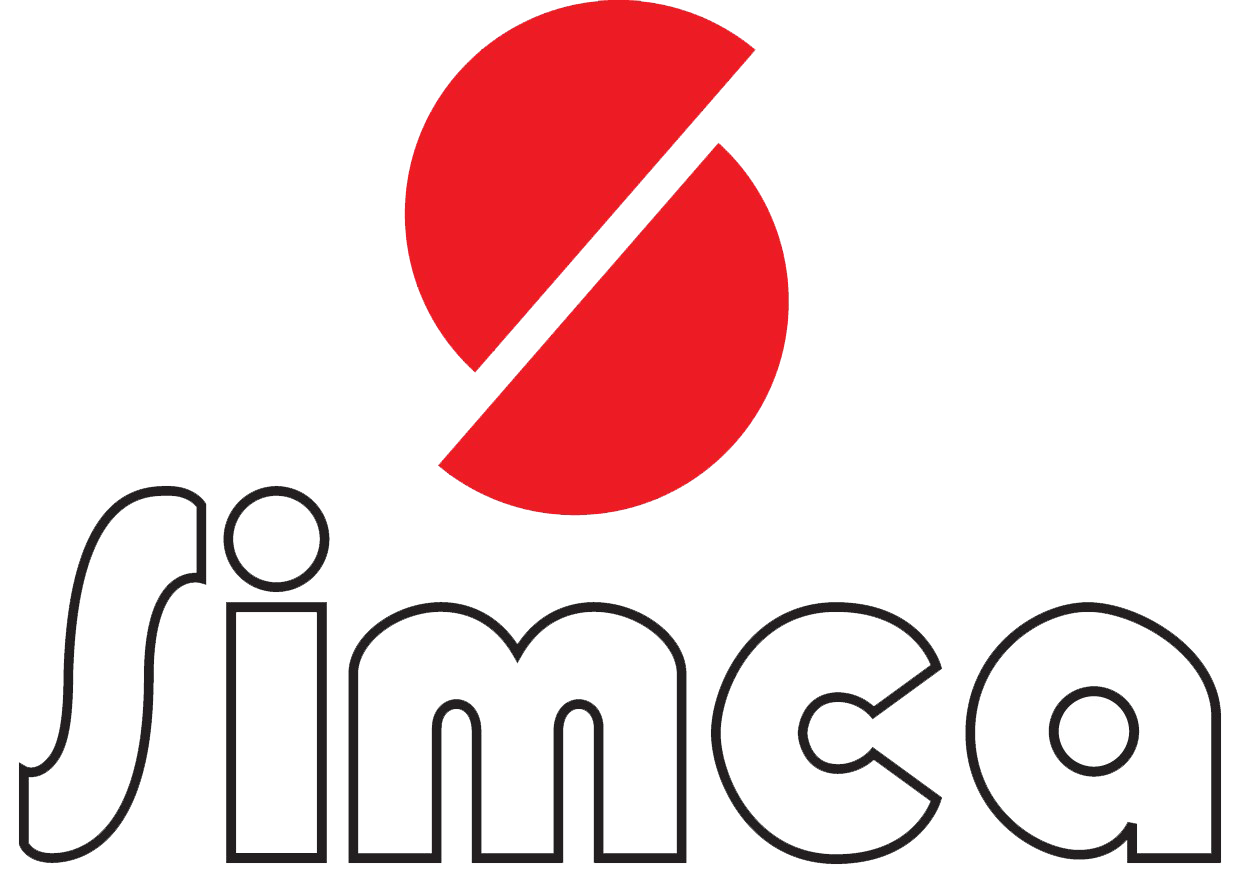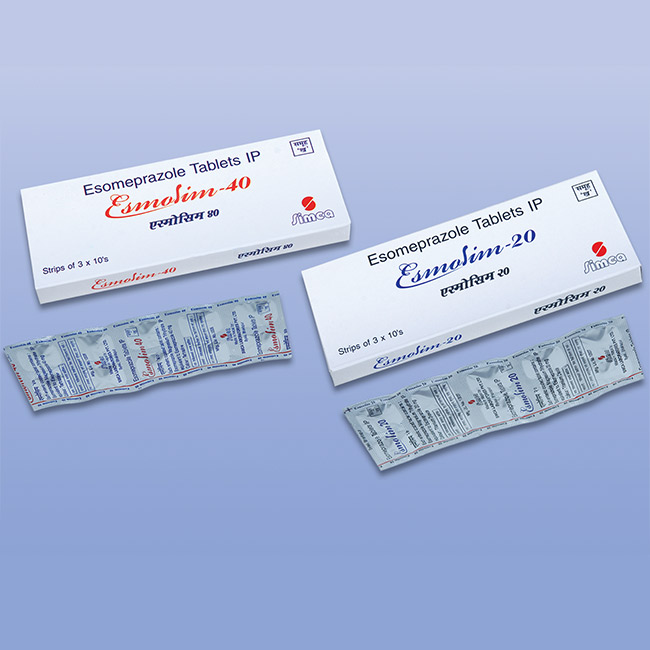Esmosim
Generic composition: Esomeprazole
General Introduction
Esomeprazole is an S-enantiomer of omeprazole, claimed to have higher oral bioavailability and produce better control of gastric pH than omeprazole.
Therapeutic category
- Proton pump inhibitors
Dosage forms available
- ESMOSIM 20mg Tablets
- ESMOSIM 40mg Tablets
Mechanism of action
- Like all other PPIs, it blocks the enzyme H+-K+ATPase in the wall of the stomach thereby suppressing acid production and helps in healing of ulcers.
Pharmacokinetics
- Absorption: Peak plasma concentration occur at approximately 1.5 hours after oral administration, esomeprazole is decreased by 43% to 53% after food intake compared to fasting conditions, 97% plasma protein bound
- Metabolism: extensively metabolized in liver by cytochrome P450 enzyme
- Elimination: approximately 80% of an oral dose of esomeprazole is excreted as inactive metabolites in the urine, and the remainder is found as inactive metabolites in the feces.
- Half-life: 1-1.5 hours
Uses
- GERD
- Dyspepsia
- Gastritis
- Peptic ulcer
- Zollinger-Ellison Syndrome
- Heartburn
Dose
- 1 tablet to be taken once a day in empty stomach
- 20-40mg once daily for 4-8 weeks for healing erosive esophaigitis, peptic ulcer, 20mg once daily as a maintenance dose,
- 20mg once daily for up to 4 weeks for GERD and can be additionally taken up to 4 weeks,
- 10 days of triple therapy with esomeprazole 40 mg once daily, amoxicillin 1g and clarithromycin 500 mg twice daily for eradication of H. Pylori
Side effects
- The most frequently occurring adverse events were headache, diarrhea, nausea, flatulence, abdominal pain and constipation.
Contraindications
- Hypersensitivity to esomeprazole or to substituted benzimidazoles.
Precautions
- Because treatment with esomeprazole may alleviate symptoms and delay diagnosis, patients on long-term treatment should be kept under regular surveillance.
- Caution should be exercised in pregnant and nursing mothers.
Drug interaction
- Atazanavir: Plasma concentrations may be reduced by esomeprazole, decreasing the efficacy.
- Diazepam: Plasma concentrations may be increased by esomeprazole; however, the increase not likely to be clinically important.
- Drugs dependent on gastric pH for bioavailability (eg, ampicillin, cyanocobalamin, digoxin, iron salts, ketoconazole) – Absorption of these drugs may be affected.
- Warfarin: Risk of bleeding may be increased


